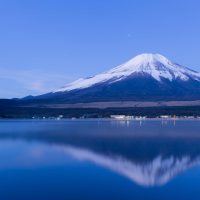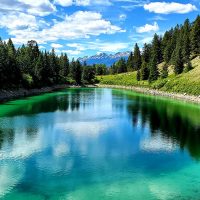Mount Fuji (富士山, Fuji-san) is one of the most famous landmarks in the world and the ultimate symbol of Japan. At 3,776 meters, it is the country’s highest peak. The mountain holds a special place in the hearts of Japanese people and tourists alike. It combines natural beauty, spiritual meaning, and cultural heritage. Whether you climb to its summit or admire it from afar, the Fuji experience leaves unforgettable memories.

The Natural Significance of Mount Fuji
Mount Fuji lies about 100 kilometers southwest of Tokyo. What makes it unique is not only its towering height but also its perfect cone shape. Snow covers its peak most of the year, creating a view that millions instantly recognize. Volcanic activity shaped its layers over thousands of years and gave it this majestic form.
The mountain is surrounded by the famous Fuji Five Lakes:
- Lake Kawaguchiko
- Lake Yamanakako
- Lake Saiko
- Lake Motosuko
- Lake Shojiko
These lakes offer some of the best viewpoints. At sunrise and sunset, the reflection of the snowy peak on calm waters creates a magical scene full of peace and inspiration.
Cultural and Spiritual Significance
For centuries, Japanese people have treated Mount Fuji as more than a mountain. Buddhists and Shinto followers considered it sacred. They climbed its slopes in search of purity and a closer connection to the divine.
In Shinto belief, sacred spirits live on the mountain. In Buddhism, Fuji represents a path toward enlightenment. Even today, thousands of Japanese and foreign visitors climb it as a spiritual journey, not just a physical challenge.
Fuji also inspired Japanese culture and arts. Poets described it as a symbol of perfection. Writers used it as a symbol of majestic nature. The artist Katsushika Hokusai immortalized it in his famous woodblock prints, giving the mountain a place in global art.

Geological History and Legends
Mount Fuji is not only breathtaking in appearance but also fascinating in its geological story. Scientists believe the mountain formed more than 100,000 years ago through a series of powerful volcanic eruptions. In fact, Fuji is not a single volcano but a composite of several overlapping ones. The current cone that we see today is known as “Shin-Fuji” (New Fuji), which grew on top of older volcanoes like Komitake and Ko-Fuji (Old Fuji). This layered history explains its perfect cone shape and the fertile soil that surrounds it.
The most significant eruption in recorded history was the Hōei eruption of 1707. It lasted for weeks and spewed vast amounts of ash into the air, blanketing farmland, damaging homes, and even reaching Edo (modern Tokyo), nearly 100 kilometers away. Although it did not produce lava flows, the eruption reshaped parts of the mountain and created a large crater on its southeastern slope, still visible today as the Hōei crater. This event served as a reminder of the mountain’s immense power and the potential risks it poses, even though it has remained dormant since then.
Alongside its scientific history, Mount Fuji carries a rich spiritual and mythical dimension. Japanese folklore often portrays the mountain as a divine entity. Some legends say that deities and sacred spirits reside within Fuji, watching over the land and its people. Others describe it as a portal to the spirit world, a place where the human and divine realms connect.

The Climbing Experience
Climbing Fuji is a dream for many travelers. Every year, more than 300,000 people make the attempt during the official season from early July to early September.
- Four main routes lead to the summit: Yoshida, Fujinomiya, Subashiri, and Gotemba.
- The climb usually takes 5 to 8 hours. The descent takes 3 to 5 hours.
- Many climbers hike at night to witness the sacred sunrise at the summit, known as Goraikō.
The climb does not require professional skills, but good fitness and preparation are essential. Weather changes quickly, and the summit remains very cold even in summer.

Best Places to View Mount Fuji
Not everyone climbs, but everyone can admire its beauty. Popular spots include:
- The Five Lakes, especially Kawaguchiko during cherry blossom season.
- Hakone, a hot spring area with wide, open views.
- Shiraito Falls and Oshino Hakkai, rural sites with Fuji in the background.
- Tokyo Skytree, where clear days reveal the peak from the capital.
Festivals and Events
Several festivals celebrate Mount Fuji. In spring, the Fuji Shibazakura Festival covers the fields with thousands of pink moss flowers under the mountain. In summer, locals mark the opening of the climbing season with rituals and prayers for safe journeys.

Best Time to Visit Fuji
- Climbing: July to early September offers the safest conditions.
- Viewing: Winter provides the clearest views of the snow-covered peak. Spring and autumn add blossoms or maple leaves for unforgettable scenery.
Practical Tips
- Dress in layers to handle sudden temperature changes.
- Book accommodations early in climbing season.
- Carry enough cash, as mountain huts rarely accept cards.
- Respect the sacred nature of Fuji and keep the area clean.
A Journey to Remember
Mount Fuji is more than a mountain. It is a national icon that reflects Japan’s spirit. Its natural beauty, spiritual meaning, and cultural role make it a destination like no other. Whether you climb its peak or view it from the lakes below, your experience will stay with you for life.
With Nutrition Travels, discover Mount Fuji and explore the heart of Japan’s magic.











